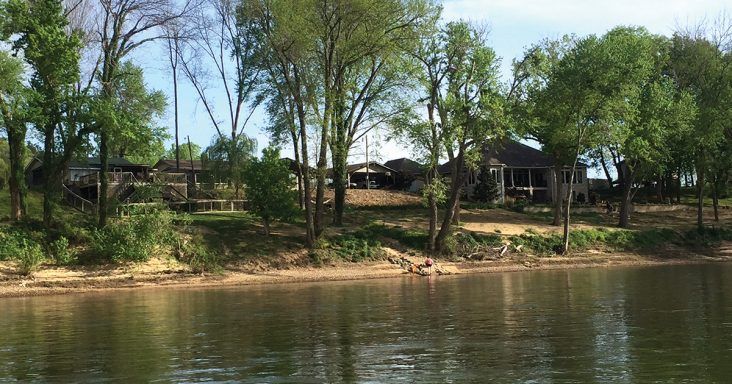White River Basin study of hydrology, water needs is underway
by October 7, 2019 4:09 pm 852 views

Native American groups lived along the fertile banks of the 722-mile-long White River long before European explorers came to the region in the 16th century. The rich valleys and fields it fed supported wildlife, and some were used to grow crops. The river that snakes through north Arkansas and southern Missouri is a tributary of the Mississippi River and was used as a primary means of transportation.
Native American tribes no longer live on the banks of the river, but it remains a vital economic engine for the region. Farms, lakes, tourism, flood control and other sectors are reliant on the cold, ever-flowing waters.
A series of public meetings seeking input into a study of hydrology and water needs associated with the upper White River Basin will take place this fall in Mountain Home, Newport, and Branson, Mo., according to Arkansas State University. The goal of these public meetings is to gain stakeholder input that will help develop a detailed basin-wide analysis that examines all uses of water in the basin and how well the system provides resources to meet those needs. The study hopes to examine original design criteria/assumptions for dams/reservoirs and compare those assumptions to actual conditions and evaluate current water needs and determine projected water needs in the basin.
“This is the first of three phases of our study,” said Dr. Yeonsang Hwang, interim associate dean and associate professor of civil engineering at ASU.
Arkansas State University initiated this study with the Little Rock District, U.S. Army Corps of Engineers (USACE), in September 2018.
The White River Basin not only includes the river, but it also encompasses lakes in the basin such as Bull Shoals, Norfork, Table Rock, Greers Ferry, and Clearwater in southern Missouri. The USACE owns and operates six dams in the basin. The dams are operated as a system to reduce frequency and severity of floods, provide water supply, generate hydroelectric power and provide minimum environmental flows downstream of Bull Shoals and Norfork lakes.
Phase 1, which is underway, involves gathering stakeholder input pertaining to current water resource needs. In Phase 2, input gathered from Phase 1 will be used to develop a detailed scope of work for an in-depth analysis of the water uses in the basin and how those uses are being met by current operational procedures.
The exact scope and other study details are being developed. They will be dependent on available funding sources and feedback solicited in Phase 1.
Finally, Phase 3 includes initiating the actual study and performing the interpretive analyses. Jaysson Funkhouser, program manager with the Little Rock District, USACE, leads this study for the Corps and led the efforts to secure a research partnership with a university.
“We are pleased to have A-State leading this study,” Funkhouser said. “The White River Basin encompasses large portions of Missouri and Arkansas. A study of this complexity requires that USACE partner with a non-partial academic institution to lead and produce independent research on the basin.”
“The big river study will create significant research opportunities for our faculty and students concerning an issue that touches the lives of so many Arkansans. The study will take several years and will allow the faculty and students to make valuable contributions towards a sustainable future for Arkansans and the citizens of the Delta region in particular,” said Dr. Abhijit Bhattacharyya, dean of the College of Engineering and Computer Science at ASU.
In addition to the public meetings, individual stakeholder meetings will be scheduled at each location, according to Funkhouser.
“We want to make sure that we get input from all of our stakeholders. In this way, we should have the best information available to us to design a study that will address the stakeholders’ needs.”
For more information on the study, including the other meetings, visit WhiteRiver BasinStudy.com.
“The White River is such an important resource for so many in Arkansas and Missouri,” says Dr. Hwang. “We are hoping to hear from a diverse representation of stakeholders during Phase 1 of our study.”
